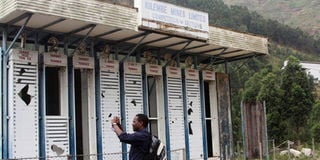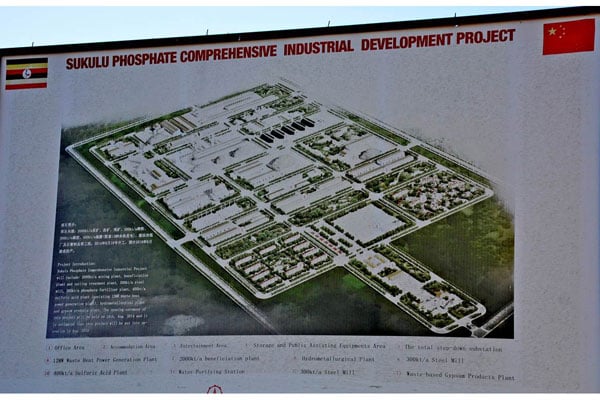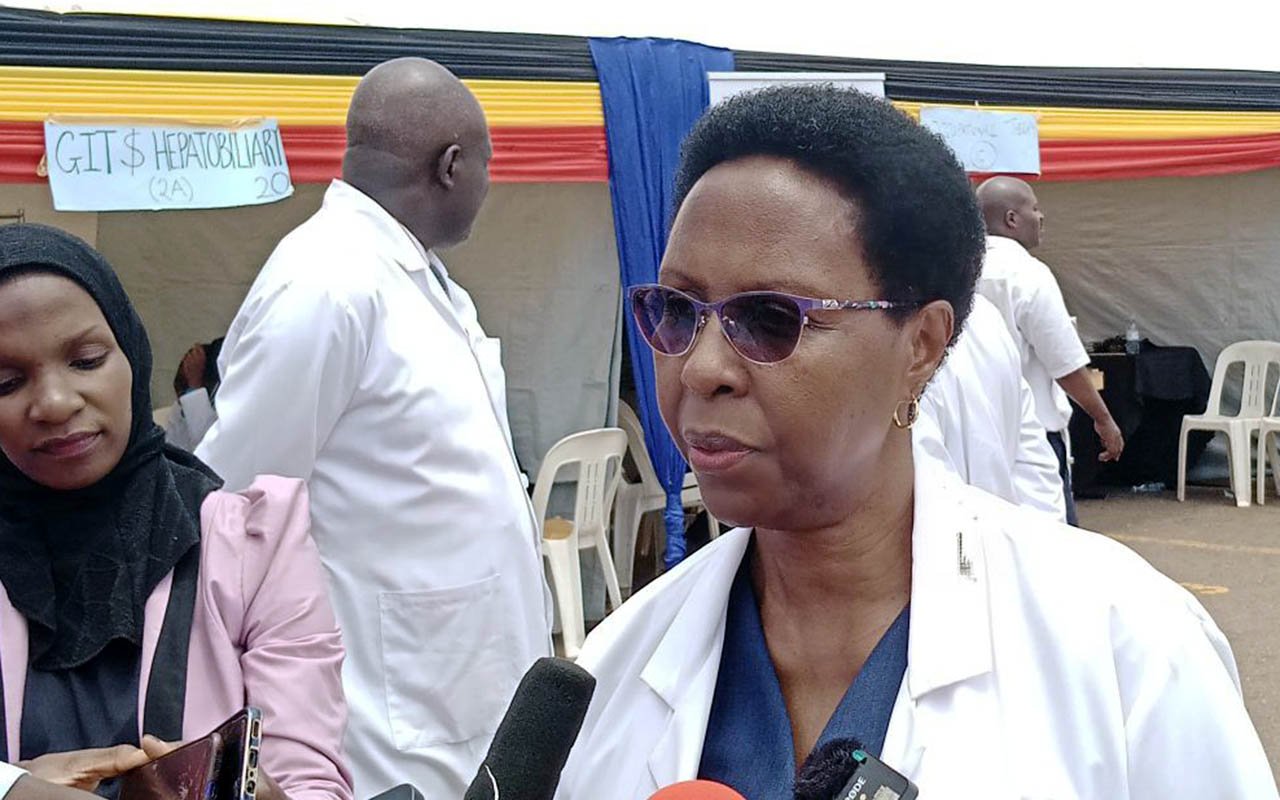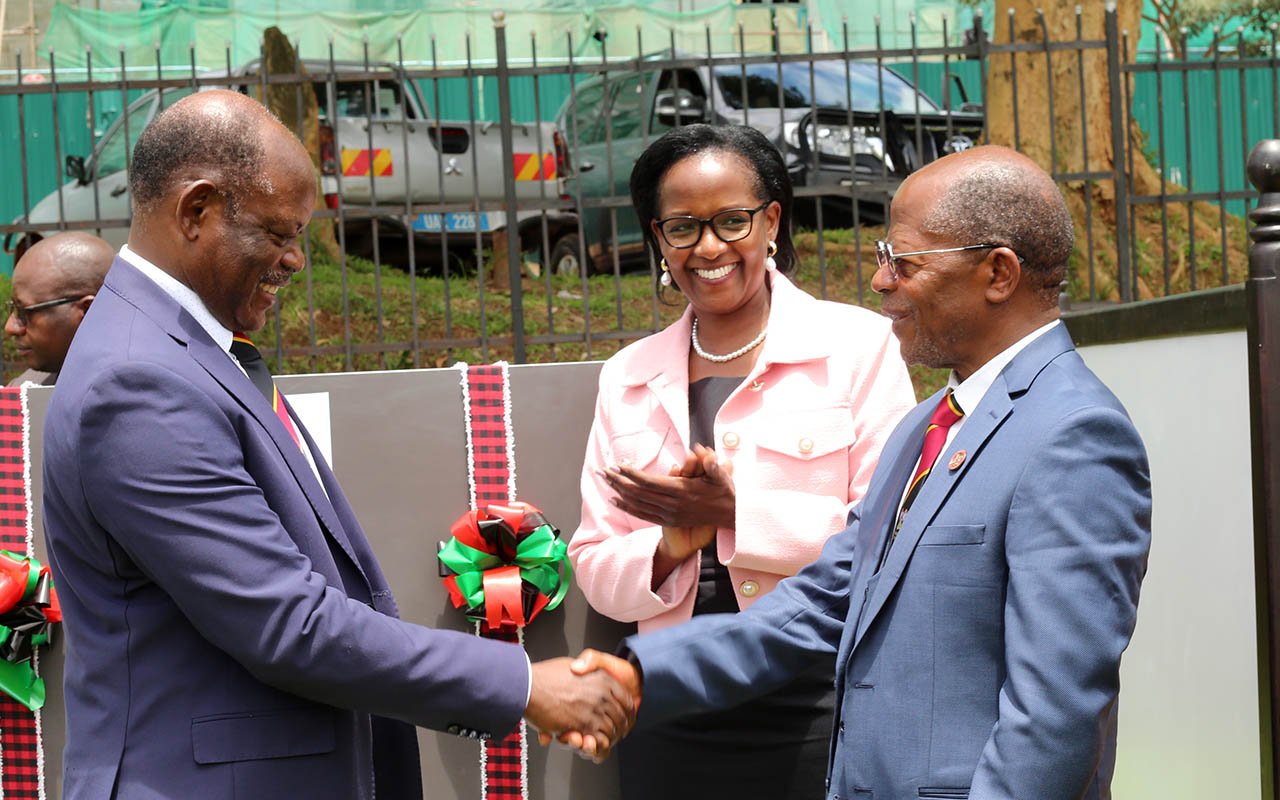The haunting legacy of Kilembe mines

Seeking redemption. A section of the dilapidated Kilembe mines in Kasese District. FILE PHOTO
What you need to know:
Part III. In July last year, a committee instituted to advise government on the Kilembe mines lease recommended the termination of the contract for Tibet Hima Mining Company, a Chinese company, which three years earlier had been granted a 30-year concession for the once vibrant copper/cobalt mines. Close to a year after the concession was terminated, the status quo hangs in balance, writes Frederic Musisi.
Officially, Tibet Hima Mining Company (THMCOL)’s concession for Kilembe mines stands terminated as President Museveni ordered last June and as per the recommendations of the winding-up commission, which was established to study the salient issues leading to THMCOL’s non-performance. The commission’s report was submitted to government on October 31 last year.
Unofficially, multiple government sources talked to say they do not know what is next.
At the heart of the matter, sources say, has been the lobbying to have THMCOL “pardoned” but under revised terms.
Upon receiving the winding-up commission’s report, Ms Evelyn Anite, the State minister for Finance in-charge of Investment and Privatisation, told Daily Monitor that “it was studied and a request sent to the Attorney General to advise accordingly”. She, however, referred the matter to Finance minister Matia Kasaija.
Mr Kasaija had told this newspaper earlier on that he could not pronounce himself on the final decision.
When this newspaper contacted the chairperson of the winding-up commission, Mr Edwin Mwesigwa, about the ongoing maneuvers to ‘pardon’ THMCOL, he said: “I think we should equally wait for the Attorney General’s opinion if that is what Finance is waiting for.”
READ:
Commission’s view
“As a Commission, we did our job. However, it is important to add that the issue as regards the next steps is perhaps larger than the question put. There is the strict interpretation of the concession agreement and applicable laws to take into consideration in terms of what the next steps are not to mention what government’s expectations still are,” Mr Mwesigwa said.
He added that “all these must be factored in to avoid a process that would be liable to challenge in future or expose government to public ridicule.”

Unutilised. Some of the dilapidated structures at the once vibrant Kilembe mines
THMCOL itself sued the government, seeking, among others, an interim injunction against the State from interfering with the concession until the main application has been disposed of and damages of at least Shs120b.
The company, in its suit filed at the High Court’s Commercial Division in Kampala on February 21, also accuses government of breaching terms of the concession, among others “failure to renew the company’s mining lease, failure to approve draft insurance policies, and failure to deliver permits and licences required to commence” it’s activities. Hearing of the case is scheduled to start soon.
The company’s temporary injunction was, however, dismissed with costs on April 5. The court said maintaining the status quo or not had no threat to hearing the main suit, whose hearing is yet to be fixed.
The winding-up commission was established by virtue of provisions of the concession agreement between government and THMCOL signed in September 2013. The consortium was said to have beaten the likes of China’s Gingko Energy Investments Company, Sino- Steel Limited (China) Konkola Copper Mines (Zambia), Tibet-Hima Industries Consortium (China) and Shree Minerals of Australia to the deal.
The consortium was said to be comprised of Shanghai Baosteel Group, which is an iron and steel conglomerate, with expertise in smelter technological supplies; Chinalco Luoyang Copper Company; Yunnan Copper Company with experience in exploration expertise provision; and Dongfang Electric Corporation, whose expertise is in hydro-power technical and development equipment supplies.
Others included Tebian Electric Apparatus, who are manufacturers of cables, cords and transformers; Zijin mining Group (mining and downstream beneficiation) as well as Zongshen Industry Group (mining financial investments). However, several firms in the consortium pulled out in due course, setting in motion THMCOL’s woes.
One senior official familiar with the matter told Daily Monitor that partly why THMCOL failed is that the company “naively” agreed to a number of the government’s ambitious targets such as setting up a smelting plant even when such facility clearly does not make any business sense.
Company faulted
“The mine had been abandoned for nearly 30 years and government expected it to be turned around in less than five years. Isn’t that madness?” the official said.
Mr Mwesigwa, however, disagreed with this reasoning, saying “the government packaged the Kilembe mines and carried out a procurement, which had several bidders participate. Tibet emerged the best after the evaluation and entered into the Concession Agreement.”
“They had the benefit of advisors; I did not participate, so I do not know who their transaction advisors were. We enjoy the principle of freedom of contract and a party is bound by the terms of the contracts they freely enter into. It would be inconceivable to imagine that they responded to a bid and actively pursued and eventually entered into a concession when they did not appreciate what it was and the scope or the extent of the investment that was required,” he said.
Therefore, he added that “it is not a question of government setting high standards, which if you ask me, [were] entirely within their remit to do.”
Copper is currently trading at $7,300 (Shs26m) a metric tonne in London, its best run in almost three decades. Had government managed to resuscitate the mines, Kilembe would be back on track.
According to bloomberg news, copper was at $7,289 a metric tonne in April at the London Metal Exchange, after earlier touching $7,312.50, the highest since 2014.
During the 1970s, production at Kilembe peaked at around 18,000 tonnes of copper cathode a year. However, Amin’s nationalisation policy led to things falling apart and also saw most expatriate workers, especially Asians – many of whom were Ugandan citizens – flee.
The mines ceased operations in 1978 as a result of the political strife coupled with a steep fall in prices of copper ore. From 1978 to 1982, the mines was placed under care and maintenance of Kilembe Mines Limited (KML), a state-owned company. In 1992, Kasese Cobalt Company Ltd was also established to recover cobalt from an unstable stockpile of a cobalt-rich sulphide concentrate, and see if one of the units could be converted to smelt copper and other metals.
Concession details
According to the terms of the concession, THMCOL was to pay annual concession fees to KML in its capacity as the asset holding company, as partial consideration for the transfer of the fixed assets to the concessionaire.
The main objective of getting on board a private investor to take over KML essentially fit into government’s plans of reviving mining, but also to resuscitate Kilembe and to encourage further exploration and development of minerals thereat.

Idle. One of the tunnels leading to the mines
Prior to the termination, THMCOL had been routinely faulted for defaulting on key operational terms of the concession agreement such as non-payment of annual concession fees of Shs6b, failure to invest the minimum capital expenditures totaling to $175m (Shs618b), non-provision of an unconditional exploration bank guarantee and failure to submit acceptable feasibility study reports on the Smelter and Tailings Pond Project.”
The winding-up commission established that notwithstanding some work done, “there was little or no work done at 4,300 level; there was no clear indication of what had happened to some of the assets replaced; key operational areas such as the shaft and skip/hoist were not functional and that there was significant encroachment on the mines’ land”. THMCOL in defence said it had been “unable to fulfill its obligations on account of the floods in 2014; when three rivers; Nyamwamba, Nyamugasani and Mubuku burst following heavy rains”.
THMCOL also faulted government for having failed to grant it permits to export 30,000 tonnes of copper concentrate as samples to China for “metallurgical testing” whose results were to inform establishment of a smelter plant and machinery at the revamped Kilembe copper mines.
The commission said it “carefully reviewed the concessionaire’s assertions and established” that although the damage caused by the floods was evident in certain places, it could not have affected other key areas such as exploration and that no force majeure was ever declared by THMCOL in respect of the floods.
A force majeure relates to the law of insurance frequently used in mining to protect the parties in the event that a segment of the contract cannot be performed due to causes that are outside the control of the parties such as natural disasters, that could not be evaded through the exercise of due care.
The commission also deemed the 30,000 tonnes of copper concentrate THMCOL wanted to export as “too large to be a sample for export”. That notwithstanding, the commission also established that the copper concentrate contained several other valuable minerals like gold, nickel and cobalt and that the Concessionaire had omitted to indicate the exact contents of other valuable minerals in the sample other than copper.
Back to square one
One of the things the government has stuck its guns to is value-addition, meaning it wants an investor who will install and operate a copper/cobalt smelting plan to enjoy related downstream benefits.
One official familiar with the matter told Daily Monitor that “it is in that policy that lies the problem” and partly explains why it is government itself “shooting itself in the foot; they are setting the bar too high for investors in a such [Ugandan] environment troubled by so many things.”
Similar sentiments were re-echoed by mining lawyer Denis Kusasira who in a separate interview noted that “the government needs to first realise what it wants from the mineral sector,” the official said. “Sustainable development of minerals does not mean keeping it in the ground for future use; it rather means you extract them, make money out of them and invest it wisely for the future generation.”
For example on the government’s value-addition policy, Mr Kusasira said downstream facilities in mining is not easy to dictate.
“Sometimes the feed stock is not big enough to warrant [smelting] plants but that aside, you need to know where your advantage is; is it in exporting/selling concentrates or finished products?
“The failure to analyse is costing us a lot as a country. No one is against value addition but the process must be defined,” Mr Kusasira said.
Copper alloy, for example, is used in the making of, among others, electrical wires, boat propellers, microchips, fire sprinkler systems, and welding electrodes. By emphasising value addition, Mr Kusasira wondered if the government wants an investor in Kilembe to “make all that here? Would it make sense to any investor?”
The board chairperson of the Uganda Chamber of Mines of Petroleum, Mr Elly Karuhanga, said: “Now we have a second chance to get a better investor. The country never lost the mines; we only lost time. Whatever we missed in the old concession we will ensure we get them right in the new one.”
He added that during the last Presidential Investor Round Table Initiative meeting early this year, they agreed to get on board a new investor for Kilembe by April. Ugandans are still waiting to hear the next step.
Kilembe’s mining history
The first recorded copper discovery in Uganda was by the Duke of Abruzz during an expedition to the Rwenzori Mountain in 1906. But the main commercial deposits were discovered in 1927 by D. Magee who was working for Tanganyika Concessions Limited, which had been given a mineral prospecting licence covering 9,360 square miles.
The company started trenching on the northern side of Nyarusingye stream but had its licence reduced to 200sq miles in 1933. During that time, little work was done on the mines mainly because of accessibility. The Mbarara-Kasese road was not built until 1939. This, coupled with the low prices on the world market and the looming World War II, saw the company abandon the mines.
Government fenced off 155sq miles around Kilembe to keep the deposits safe as it looked for another company to operate them. In 1942, rescue came in the form of Alderson, a Canadian who had developed the Macalder copper and gold mines in Kenya, who interested Frobisher Ltd, a Canadian mining company, forming a joint venture with Rio Tinto, a British mining giant.
The two carried out preliminary investigations and started drilling in 1948 until 1951 when 10.5 million tonnes of ore was discovered and another probable 4 million tonnes more. With ore of that magnitude, it recommended in 1951 that a railway line be extended from Mityana to Kasese, where it reached in 1953.
After the railway line, a power line from Jinja to Kasese was recommended, which brought the projected costs of the copper development to £8m, forcing Rio Tinto to pull out, leaving it to Frobisher.
A cheaper alternative of smelting copper in Jinja was devised, and production started in 1956 with a target of 7,500 tonnes of copper per year. Along the way, Frobisher’s interests were bought by Falconbridge Nickel Mines Limited, another Canadian company which owned 75 per cent of the mines until its closure.
In Part Four tomorrow, we look at gold mining





